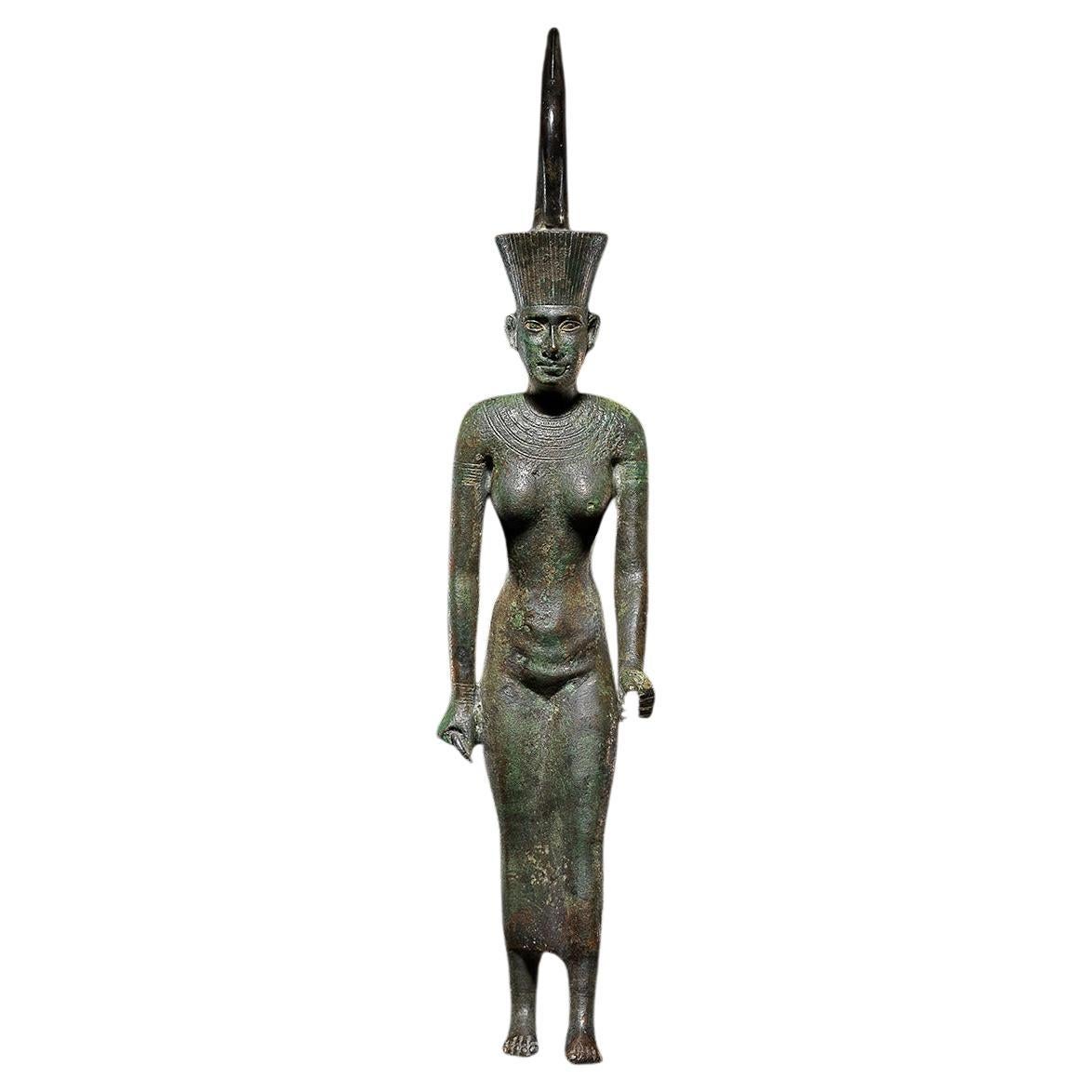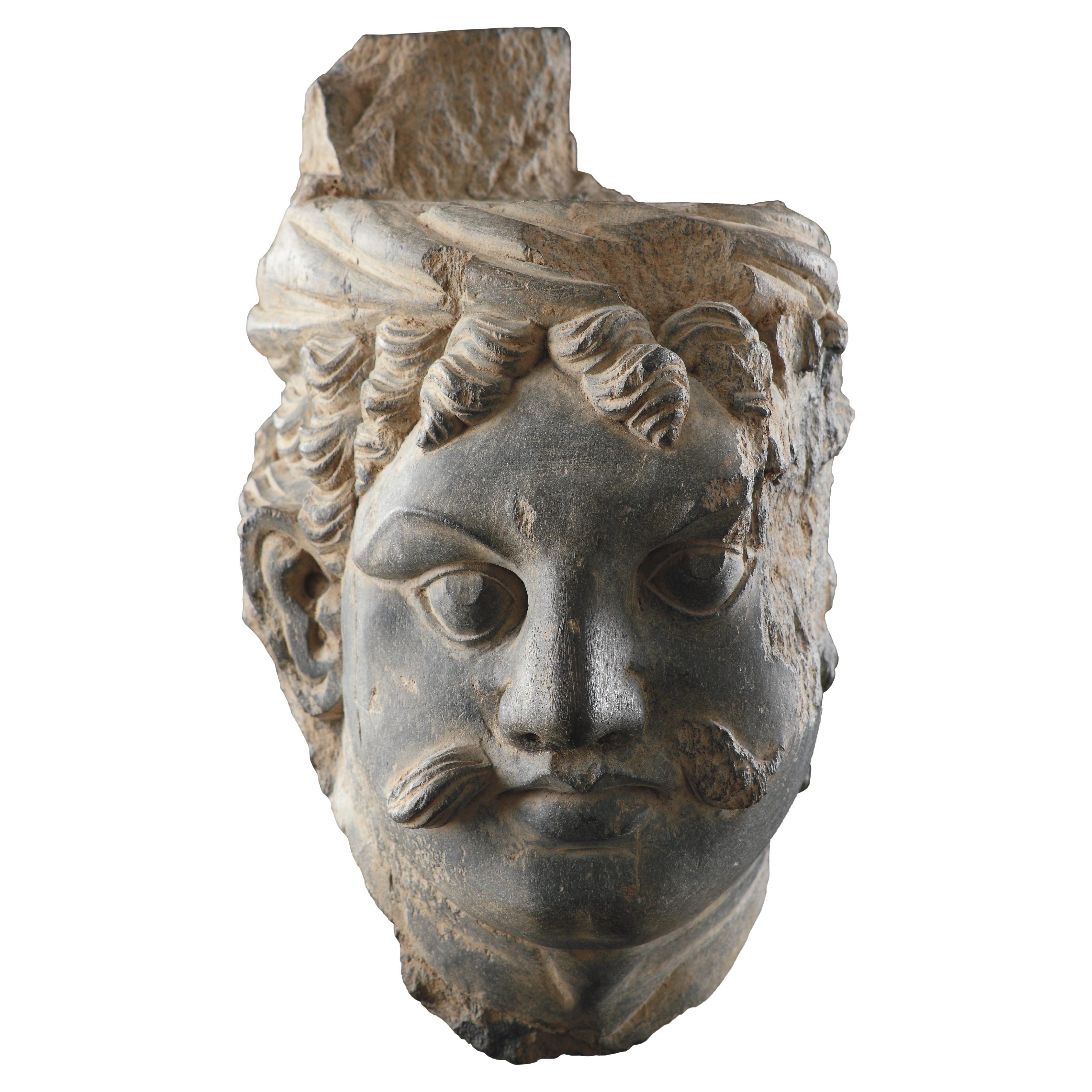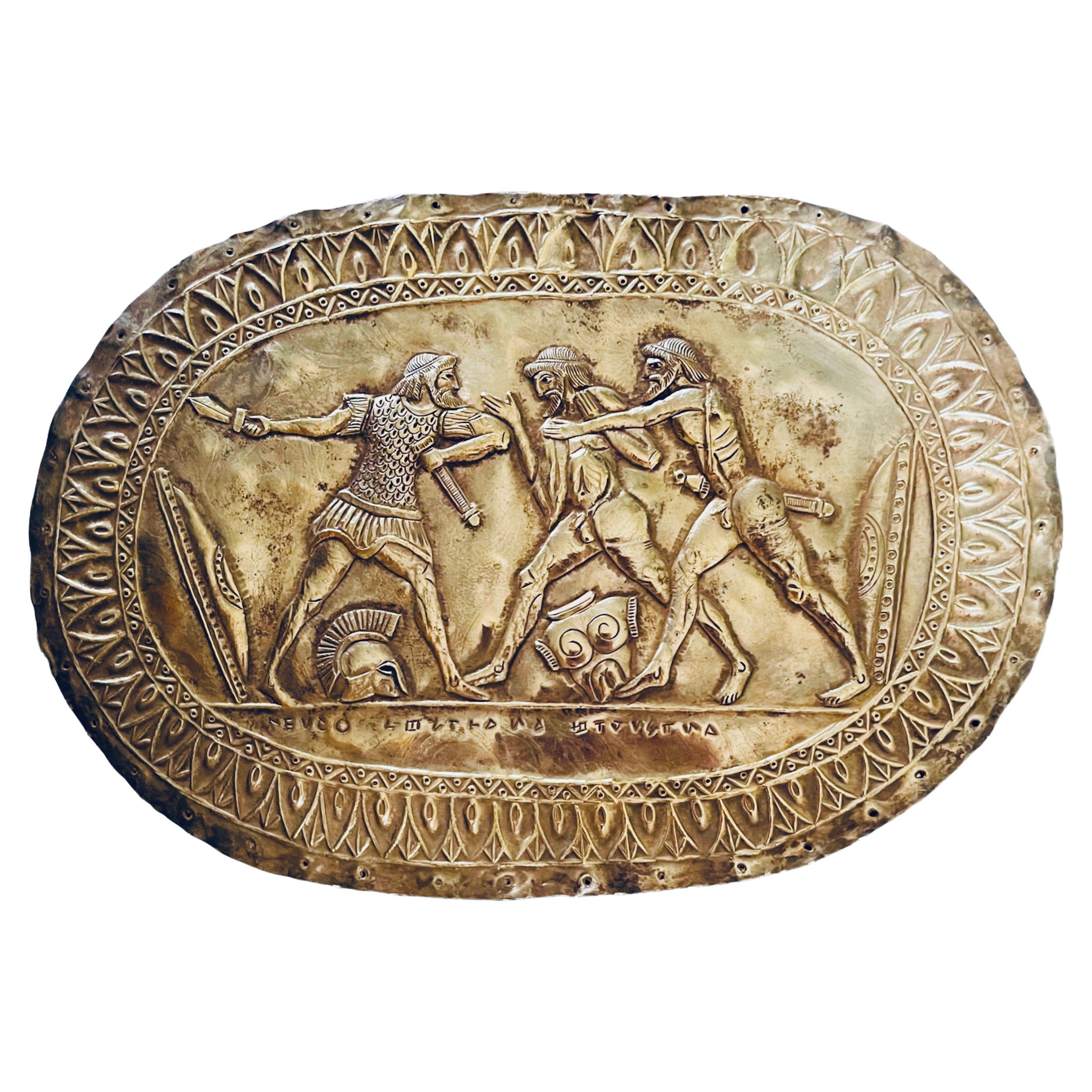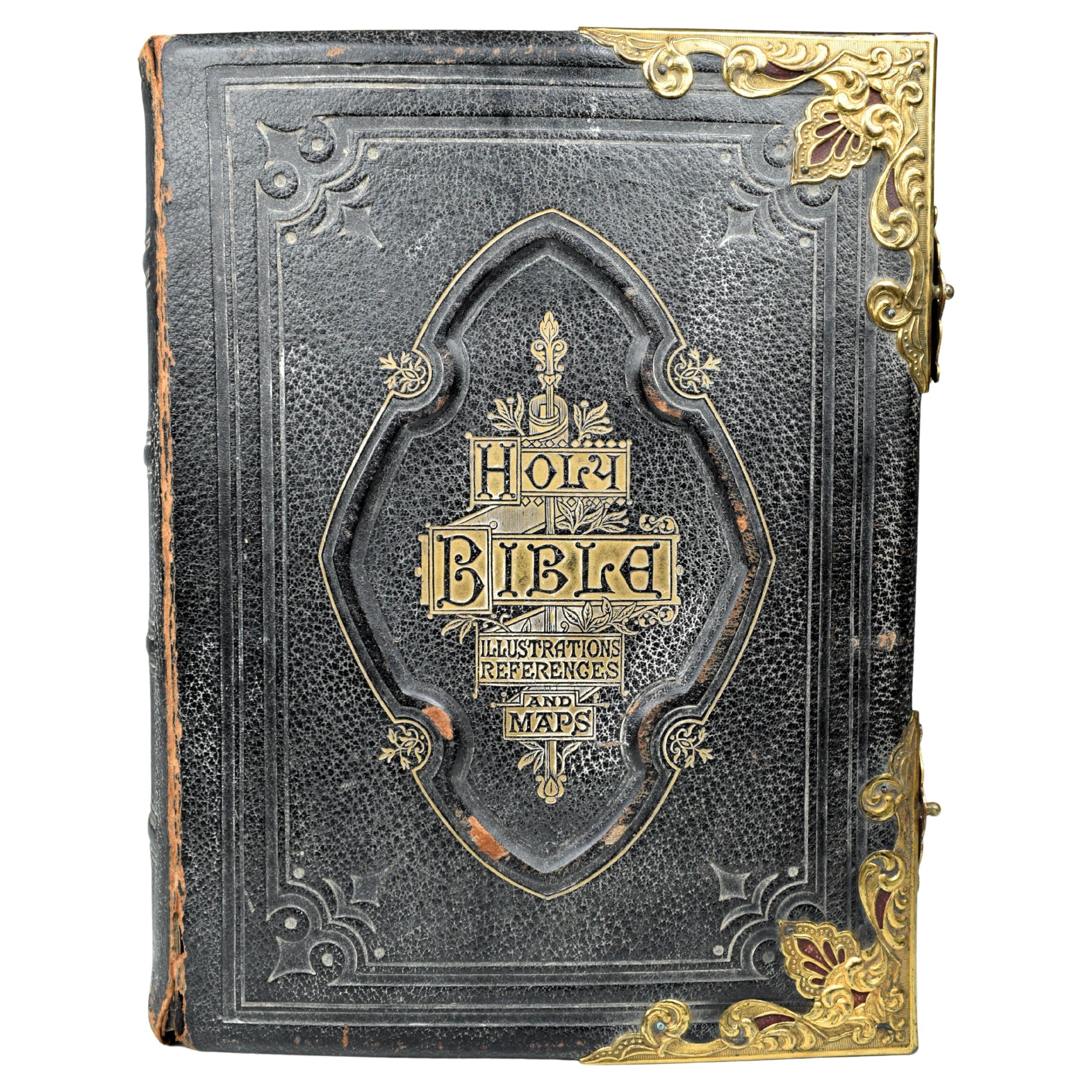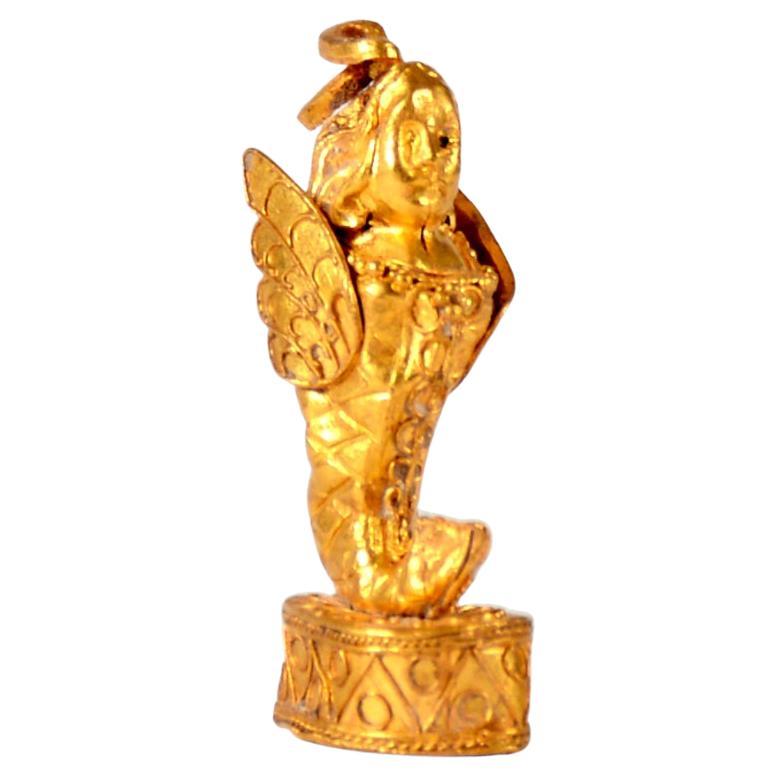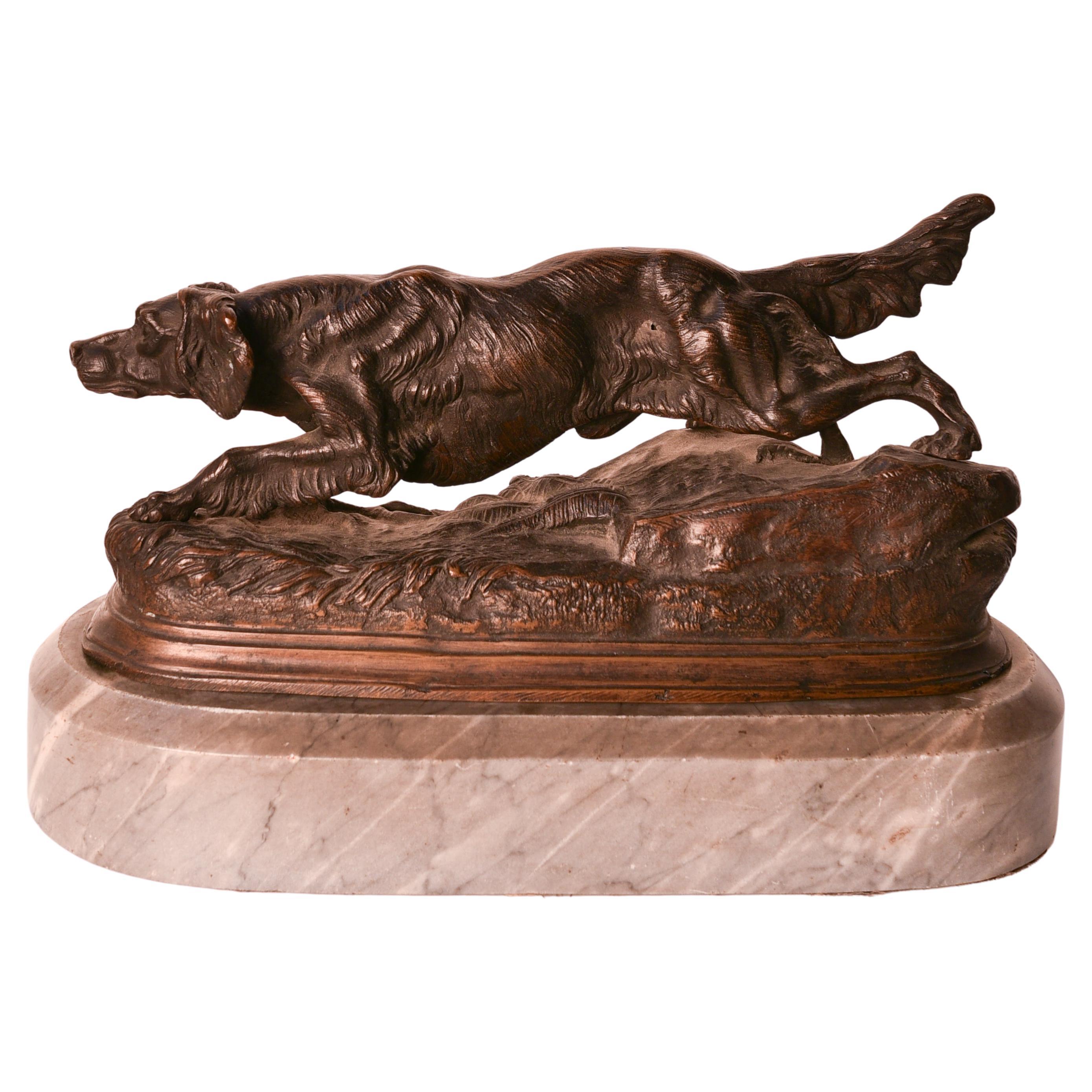Items Similar to A Rare and Finely Detailed Greek Bronze Statuette of an Actor with Large Phallus
Want more images or videos?
Request additional images or videos from the seller
1 of 8
A Rare and Finely Detailed Greek Bronze Statuette of an Actor with Large Phallus
About the Item
A Rare and Finely Detailed Greek Bronze Statuette of an Actor with Large Phallus
Bronze
Greek
First half of 4th Century BC
Size: 10.5cm high - 4¼ ins high
Provenance:
Ex Private collection Canterbury, Kent, UK
Thence by descent to the father who in turn passed the figure on, amongst a collection of antiquities, to the uncle of the last owner in the 1960s
cf:
For a similar bronze figure see: Webster, T.B.L; ‘Monuments Illustrating Old and Middle Comedy’ London, 1978, pg. 58 - 59 AT22f
Literature:
Bieber M., The History of the Greek and Roman Theatre, Princeton, 1961, pp. 45-48, n. fig. 198, and Trendall A.D. – Webster T.B.L., ‘Illustrations of Greek Drama’, London, 1971, p. 127, pl. IV, 9, n. 20.
This amusing and finely detailed figure probably dates from the beginning of the 4th century BC, possibly after the last works by Aristophanes. The ‘comic’ mask was certainly used up to around 330 BC after which Meander changed the nature of Athenian comic theatre creating the ‘New Comedy’.
The short sleeved tunic is fastened at his left shoulder, indicating a person of inferior rank. Wearing his ‘comic’ mask with gaping mouth would indicate the actor is in ‘full flow’, with his arms in an animated theatrical pose. The comedic nature of ‘his’ act is further accentuated by the absence of his tights and the shortness of his tunic, revealing his genitals beneath his rounded stomach, for all to see !
- Dimensions:Height: 4.5 in (11.43 cm)Width: 4 in (10.16 cm)Depth: 2.5 in (6.35 cm)
- Materials and Techniques:
- Place of Origin:
- Period:
- Date of Manufacture:First half of 4th Century BC
- Condition:Wear consistent with age and use. Minor losses.
- Seller Location:London, GB
- Reference Number:1stDibs: LU9363237205652
About the Seller
No Reviews Yet
Vetted Seller
These experienced sellers undergo a comprehensive evaluation by our team of in-house experts.
Established in 1989
1stDibs seller since 2023
- ShippingRetrieving quote...Ships From: London, United Kingdom
- Return PolicyA return for this item may be initiated within 14 days of delivery.
More From This SellerView All
- A Finely Carved Gandhara Head of ‘Atlas’Located in London, GBA Finely Carved Gandhara Head of ‘Atlas’ Grey schist India 3rd - 4th Centuries AD SIZE: 19cm high, 11cm wide, 12.5cm deep - 7½ ins high, 4¼ ins wide, 5 ins deep References Pratap...Category
Antique 15th Century and Earlier Indian Antiquities
MaterialsSchist
- Very Rare and Early Carved Vessel in the Form of a HedgehogLocated in London, GBA Very Rare and Early Carved Vessel in the Form of a Hedgehog Alabaster Near Eastern 3rd Millenium BC SIZE: 9.5cm high, 9.5cm wide, 15.5cm deep - 3¾ ins high, 3¾ ins wide, 6 ins ...Category
Antique 15th Century and Earlier Antiquities
MaterialsAlabaster
- An Anatolian Marble ‘Star Gazer’ FigureLocated in London, GBAn Anatolian Marble ‘Star Gazer’ Figure Marble Anatolian Early Bronze Age / Circa 2700 - 2100 BC Size: 5cm high, 3cm wide - 2 ins high, 1¼ ins high The highly stylised oval head wi...Category
Antique 15th Century and Earlier Turkish Antiquities
MaterialsMarble
- An Openwork Copper Alloy Garment PinLocated in London, GBAn Openwork Copper Alloy Garment Pin Superb colour and patina Bronze Eastern Iran or Central Asia 2000 BC SIZE: 35cm wide - 13¾ ins wide A similar pin in the Louvre-France, was exh...Category
Antique 15th Century and Earlier Persian Antiquities
MaterialsCopper
- A Hellenistic Funerary Stele in High Relief with Two Male HeadsLocated in London, GBA Hellenistic Funerary Stele in High Relief with Two Male Heads Marble Greek Hellenistic Circa 2nd Century BC Size: 20.5cm high, 38cm wide, 11cm deep - 8 ins high, 15 ins wide, 4...Category
Antique 15th Century and Earlier Greek Antiquities
MaterialsMarble
- A Rare and Finely Carved Egyptian Wooden HeadrestLocated in London, GBA Rare and Finely Carved Egyptian Wooden Headrest with a Carved Head to both Sides Representing the God ‘Bes’ (Protector of the Homestead) above Carved...Category
Antique 15th Century and Earlier Egyptian Tribal Art
MaterialsWood
You May Also Like
- Statuette of the Goddess NeithLocated in London, GBBronze statue of the goddess Neith, striding, her left foot extended forward. Her left hand is extended forward and formally held a papyrus sceptre, a fragmentary ankh is visible in her right hand. She wears a close-fitting sheath dress, incised with a broad usekh collar, and carefully engraved bracelets and armlets. On her head is the Red Crown of Lower Egypt, decorated with vertical striations and restored spiral and spire. Her face is finely molded, with a broad upturned nose and electrum-overlaid eyes and eyebrows. Neith was one of the earliest recorded gods in the Egyptian pantheon, worshipped from early in the Predynastic era through to the arrival of Roman rule. A war goddess and goddess of weaving, she was the patron goddess of the Red Crown of Lower Egypt and the city of Zau (Sais, in the 5th Nome of Lower Egypt) in the Delta. A powerful and popular goddess, she was, according to the Iunyt (Esna) cosmology, the creator of the world and the mother of the sun, Ra. This made her the mother of all of the gods, who often came to her to settle their disputes. Her symbols are the bow and arrows and a sword and shield as a war goddess, a weaving shuttle as a funerary goddess, and the Red Crown of Lower Egypt as the goddess of creation and mother goddess. She is usually depicted as a woman wearing the Red Crown of Lower Egypt, however, she is occasionally depicted as a cow in connection with her role as the mother of Ra. The use of electrum, a naturally occurring alloy of gold and silver sometimes called ‘green-gold’, for the eyes speaks to the high status of the object. Electrum had been used by the Egyptians since at least the 3rd millennium B.C., but, give its rarity, was reserved for the most expensive and important objects. Most electrum used in Egypt was imported from Nubia, though some was found there. Published: Parke-Bernet Galleries, New York, February 25th, 1971, no. 70, illus. Sotheby’s, New York, June 5th, 1999, no. 31, illus. David Aaron Ltd...Category
Antique 15th Century and Earlier Egyptian Egyptian Antiquities
MaterialsBronze
- The Holy Bible With An Abridgement Of The Commentaries Of Scott And HenryLocated in Islamabad, PKThe Holy Bible With An Abridgement Of The Commentaries Of Scott And Henry Bound in full navy Morocco with the covers displaying open-tooled bordering details, an indented central ti...Category
Antique 19th Century British Victorian Antiquities
MaterialsGold Plate
- Large Greek Style Repousse Oval Metal PlaqueLocated in Guaynabo, PRThis is a large Greek style repousse oval metal plaque depicting a scene of a Spartan warrior trying to defend himself against two nudes warriors from another tribe. There are two shields standing at each side of them. There are also a Spartan helmet...Category
20th Century Greek Greek Revival Historical Memorabilia
MaterialsMetal
- Greek gold pendant with siren figurine, HellenisticLocated in UTRECHT, UTA gold pendant in the shape of a siren with a human head, hair parted and falling onto back, human upper body, wings on back, standing on drum-shaped pedestal, decorated with granule...Category
Antique 15th Century and Earlier Greek Classical Greek Antiquities
MaterialsGold
- 19th century bronze sculpture of an Irish setter dog on a grey marble socleBy Jules MoigniezLocated in Oostende, BEJules Moigniez (1835 – 1894) was a French animalier sculptor who was best known for his bronzes depicting birds, horses and dogs. This sculpture is an Irish setter dog, which was put...Category
Antique 19th Century French Antiquities
MaterialsMarble, Bronze
- Greek Gnathian EpyichysisLocated in London, GBA delicate South-Italian epichysis. The vessel was a wine jug, composed of a narrow neck, a small lip and a high-arching handle. This Gnathian-ware epichysis was decorated with tongu...Category
Antique 15th Century and Earlier Italian Classical Greek Antiquities
MaterialsTerracotta
Recently Viewed
View AllMore Ways To Browse
Roman Theatre Mask
Antique Liquor Cart
Antique Silk Farahan
Bell Decanter
Ege No 1
Greige Lounge Chair
Kipp Stewart For Drexel Dining Chairs
Large Chopping Block Table
Milo Baughman Table For Knoll
Red Water Goblets
Stone China Large Oval Platter
Thomas Erber
1950s Coffee Table Hairpin Legs
Antique English Carved Settee
Antique Wingback Chair Cigar
Bonnie Config
Callisto Sconce
Cherry Dressing Table
